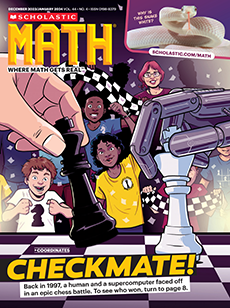Display a map of your town or city for students. If you don’t have one readily available or cannot find one on the internet, you can use Google Maps, which includes a map scale in the bottom right-hand corner. Then ask the following questions about the map:
• What does this image show? (a map of our town/city)
• What do you see on the map? (Possible answers: roads, parks, buildings, a title, a legend, a map scale, etc.)
• Can you locate where you live?
• Can you locate where our school is?
• Can you use this map to determine the distance from your house to the school? Explain. Some students may know that using a map scale helps people find real-life distances using a map. Others may be unaware.
